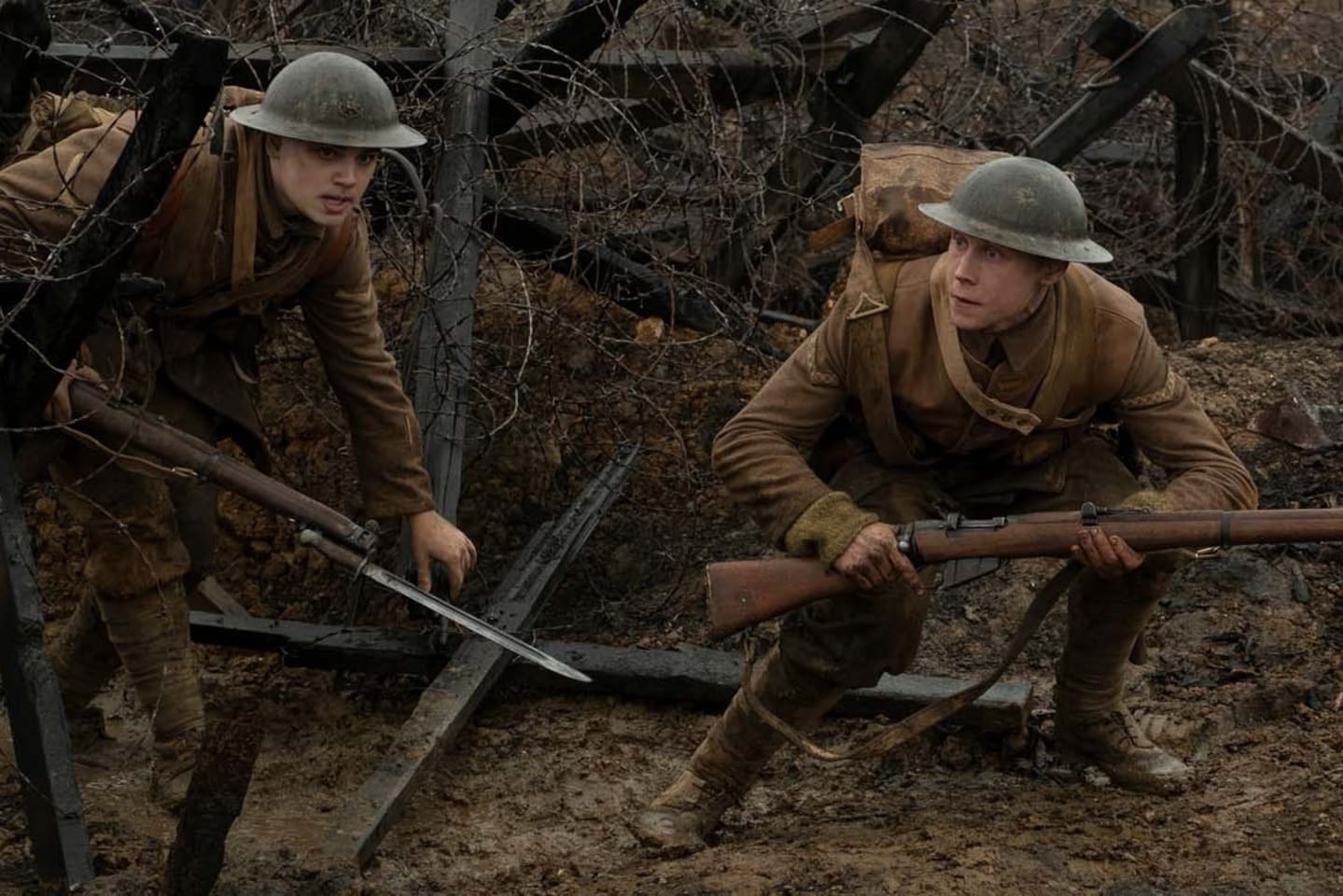What’s the big deal about yet another war movie, right? It’s a fair question. In the last few years, we’ve had Dunkirk, Hacksaw Ridge, Midway, The Great War, and the riveting documentary They Shall Not Grow Old. So why is 1917 suddenly out there winning Golden Globes, and tracking for a big wide-release box office this weekend?
It’s because 1917 is an absolute stunner. Director/co-writer Sam Mendes (Skyfall, Revolutionary Road) has created a film that feels epic despite telling a very small-scale story. Based in part on stories his grandfather told him about World War I, 1917 is set in France, in the spring of (you guessed it) 1917. On the British front lines of the war, two British soldiers, Schofield (George MacKay) and Blake (Dean-Charles Chapman), are given the miserable task of traveling miles through treacherous terrain (including through the supposedly abandoned German front) to prevent another battalion from launching an attack the next day. British military intelligence has learned that the Germans lie in waiting, and upwards of 1,500 soldiers are about to walk into a death trap, including Blake’s brother.
And with that, Schofield, Blake and the film itself are off and running. If you’ve heard anything about 1917, you’ve probably heard that it’s a so-called “one-shot” film. That is, the movie is presented as if the entire two hours are one single, continuous shot. That can feel like a gimmick, and in the hands of a lesser filmmaker that’s all it may have been. But Mendes took home a Golden Globe, and will be an Oscar frontrunner, because he’s not a lesser filmmaker. At first, you may be looking for the seams, the obvious places where one shot was cut and stitched together with the next. But very quickly, that will stop. Instead, you’ll be trying to remember to breathe. Because the thing about a two-hour shot is that it’s relentless. Even in the quieter moments, there’s barely a pause in the movie, barely a chance for the viewer to catch their breath.
That ratcheted tension alone would not, in and of itself, be enough to make this film great. But the film is a visual stunner. How do you make a two-hour continuous shot visually dynamic? You give it to a legend like cinematographer Roger Deakins. Deakins finally collected his first, long overdue Oscar with 2018’s Blade Runner 2049, and given that his work has never been better than it is here, he may getting a second gold statue next month. The camera does not move quietly or linearly. It sweeps around and about, moves in close and swings out far, circles over and back again, all in a carefully orchestrated harmony with the character’s movement. It pulls you through the action, even when you may not want to keep going. It’s absolutely stunning.

While Deakins’ cinematography is the real star of the film, short shrift should not be given to the actual cast (including some big-name special appearances that could also feel gimmicky but for the quiet strength of each of the performances). It’s very easy to go too big or be too maudlin in these types of desperate-soldiers-in-war roles. But Chapman and especially McKay never give in to that. Their performances are pitch-perfect, providing the perfect partner to what Mendes and Deakins are doing. And that’s perfect because it turns out that that’s really what 1917 is about: partnership. The partnership of one battalion to another, of brothers in arms and of blood, of two single soldiers in the middle of nowhere who have nothing but each other. For another site, I recently made a list of the top 10 movies of 2019, and 1917 wasn’t on it. That’s because I hadn’t seen it yet. To answer the questions I started with – what’s the big deal with another war movie and why are we hearing so much about 1917 – quite simply, it’s because this is a stunning film unlike any war movie you’ve seen before.
1917 expands nationwide this weekend. Get tickets here.













